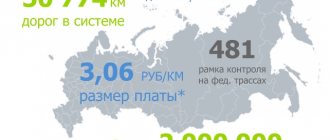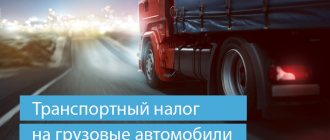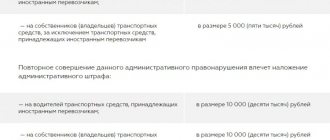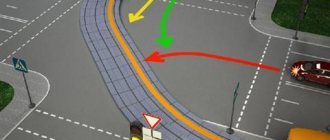According to studies, more than 60% of total damage is caused by trucks. Based on such information, the Government of the Russian Federation, together with the Federal Road Agency, decided to introduce a mandatory fee for additional load on the roadway in order to compensate for the cost of repair work.
What is the Plato system?
“Platon” is an electronic system for collecting tolls for the movement of trucks with a permissible maximum weight of over 12 tons on Russian federal highways, regardless of their environmental class. Coverage area: more than 50 thousand km of road. The name is derived from the phrase “payment per ton”. Launch date: 11/15/2015
All powers to ensure the functioning of the system and fulfill obligations are assigned to, which is its operator.
What is a toll system; Plato; and how it works
REFERENCE! Research has confirmed that heavy vehicles cause 56% of damage to road surfaces, which is comparable to the passage of up to 50 thousand passenger cars. Due to the quantity, the main part of taxes and road fees comes from car drivers, so it is fair that cars, whose owners’ income depends on roads, also take part in compensating for the harm caused.
- write off from the account account in the system on the Plato website;
- by using a bank or fuel card (using electronic payments through Sberbank, Qiwi or the Platon system itself);
- in cash (in Information Support Centers and in “live” terminals where information agents work).
The introduction of this fee system gave rise to a wave of protests, including large-scale ones. But, nevertheless, “Platon” continues to operate, since its launch has reduced the burden on the federal budget. Some cities even have billboards with information provided by the Federal Road Fund about which roads and to what extent have been repaired with proceeds from Platon.
Every year the flow of cars moving on the roads of our state is increasing. The more vehicles there are, the more damage is caused to the road surface. It is not without reason that heavy vehicles cause particular harm to the integrity of the roadway. It is their tires that wear out the road surface the most and it is under their weight that ruts are formed, into which cars then end up. And given that trucks often come with violations of loading standards, the damage is even more serious.
To obtain a new on-board unit, you will need additional documents (or rather, copies of them). For an individual entrepreneur - a certificate of state registration as an individual entrepreneur and a certificate of registration with the tax authority. For a legal entity - a certificate of registration, a certificate of registration with the tax authority and a document confirming the powers of the sole executive body of this legal entity.
You may be interested in:: Stealing RC Magnet Stickers
In other words: in this case, continuing to drive with the old on-board unit is the same as driving without it at all . That is, do not pay for using the roads. And for non-payment, in turn, of 5,000 rubles is imposed
The main operating principle of this system is to charge a fee for each kilometer that a heavy-duty vehicle travels along the federal highway. This is possible by installing on board a truck or other vehicle device connected to the GLONASS or GLONASS/GPS system (depending on the model). The on-board GLONASS device, coupled with a complete road map and vehicle database entered into the system, allows you to quickly track the route of a heavy truck for the most accurate calculation of the toll amount.
Road repair work, especially on those roads where heavy vehicles travel in large numbers, requires large financial investments. It was to cover part of such expenses that the Plato System was created, i.e. system of tariff fees for vehicles. What this is, which cars will be charged, as well as the amount of tariff fees will be given in this article.
What does the purpose of creation include?
The purpose of creating the Plato system is to obtain compensation for physical damage caused to road surfaces by heavy vehicles used for commercial purposes. The funds received in the account of each vehicle are credited to the federal budget and are spent on repairs and maintenance of subordinate highways.
The Plato system includes:
- information support center;
- system control center and processing of incoming data;
- automatic payment system for travel on a specific route;
- route processing systems;
- electronic information exchange systems between stationary and on-board devices;
- control systems.
Reliable operation is ensured by round-the-clock operation of the information service. In addition, on the official Platon website you can independently select an on-board device or obtain the necessary information.
For which cars does it apply?
Trucks and cargo-passenger vans with a permissible maximum weight of more than 12 tons, owned by individual entrepreneurs, individuals or legal entities registered in Russia or any other state, are subject to registration in the system.
The following categories of vehicles are exempt from paying tolls:
- passenger vehicles;
- military equipment and vehicles for its movement;
- special services vehicles equipped with special devices for giving sound and light signals - the Ministry of Emergency Situations, police and emergency medical services.
In addition, trucks with a permissible maximum weight of up to 12 tons are not subject to registration in the system.
Tariffs and conditions
All funds received into the Platon system from users registered on the official website are transferred to the Federal Budget and from there are directed to the repair of federal highways, their construction and reconstruction.
For 2019-2020, the tariff is set at 2.04 rubles per kilometer of road
Fines
The movement of vehicles on federal public highways with a permissible maximum weight of more than 12 tons without paying a fee to compensate for damage caused to the roadway entails administrative liability and a fine. The amount of the fine is indicated on the official website
Vehicles for transporting people, equipped with special signaling devices, and transporting weapons and military equipment are exempt from payment.
For all questions about the operation of the Plato toll collection system, you can contact the hotline numbers listed on the main page of the official website or in the Questions and Answers section
You can see how to install the on-board device on your vehicle in this video
How does it work
The basis for the functioning of the Plato system is timely communication between the operator and the heavy vehicle. The material support for such a connection is:
- On-board unit is an electronic device installed in the vehicle cabin. It is used to determine and transmit route data via the GPS or GLONASS satellite system and is a means of automatically debiting funds from the account. Each vehicle has its own device; transferring it to another owner or installing it on another vehicle is strictly prohibited.
The on-board device can be obtained from the Platon System User Service Center under a free use agreement. At the end of the service life indicated on the case, the device must be returned or replaced. According to the contract, the damaged device must also be replaced with a new one, but subject to compensation for damage.
- Route map is an electronic or paper document that is compiled for one trip and contains data about the route: starting and ending points, as well as several (up to 10) intermediate points. Serves as the basis for calculating fees. Valid for 7 calendar days, can be canceled at any time, but no less than 2 hours before the scheduled travel time. You can apply for a card yourself in your Personal Account or with the help of specialists at the Service Center.
It is important to know that when using a route map, deviating from the specified parameters is strictly prohibited.
- A third-party on-board device is any electronic device that has the function of communicating via GPS or GLONASS and parameters similar to those of the Platon system device.
- Structures with attached equipment or the movement of special vehicles are used to control the timely payment and adherence to the route when issuing a card. Vehicle identification occurs by reading information from the on-board device or by recording the state registration number.
The general operating principle of the Plato system is as follows:
- an on-board device of the Platon system, a third-party on-board device is installed in the car, or a route map for the trip is issued;
- advance payment for the route is made;
- control over compliance with the route and timely payment is carried out using stationary attachments installed on the routes, or using vehicles with a monitoring device;
- Data collection is carried out using satellite navigation GPS or GLONASS;
- the payment amount is generated automatically at equal intervals throughout the day based on data on the route traveled, received via satellite systems;
- if there are no funds on the account when identifying the car, the system generates information about the fine and sends it to the Personal Account;
- At the end of the trip, a report is generated in your Personal Account, which contains data on mileage and debited funds.
When driving on toll highways or roads that are not within the scope of the Plato system, the on-board unit goes into “sleep” mode. Such mileage is not taken into account when drawing up a route map. Therefore, there is no charge for moving the truck.
How to use the Plato system
Registration in the Platon system register is carried out:
- on the official site;
- through a free mobile application;
- through a self-service terminal;
- at information centers.
To create a settlement record, you must fill out an application and provide the following information:
- FULL NAME. citizen, individual entrepreneur or abbreviated name of a legal entity;
- TIN;
- mobile phone number and email address of the vehicle owner, entrepreneur or representative of a legal entity;
- vehicle make and model;
- state registration plate;
- Vehicle VIN;
- information about the permitted maximum weight in accordance with the technical data sheet;
- number and series of the vehicle registration certificate.
Foreign citizens are additionally required to provide permission to carry out business activities on the territory of the Russian Federation. In addition, their documents must be translated into Russian and have notarization.
Upon completion of the registration process, the user is provided with a login and password, which is required to access the Personal Account.
In addition, the operator’s representative is obliged to provide a free on-board electronic device, which must be installed in the vehicle’s cabin - through this device, tolls are paid on federal highways. To make rare trips, you don’t have to install the device - it will be easier to get a route card.
The last step to using the Platon system is to make an advance payment for the trip, the amount of which is calculated from the kilometer of the planned trip and the cost of travel for 1 km of road.
How truckers learned to deceive Plato
The first protests against the introduction of the system began on November 11, when at least 200 trucks blocked federal highways. In November and December, similar actions were held almost daily, and permanent protest camps even appeared in several cities. Over time, the protest activity calmed down: carriers had to accept paid “federal fees” as a given.
In a certain village of Kukuevo lives a certain Vasily Ivanovich Petrov, who has neither personal property nor a driver’s license, and therefore is not afraid of anything. Trucks are registered to him: let fines be sent, trials take place, bailiffs come. Vasily Ivanovich regularly pays a purely symbolic 1,000 rubles every month so that the truck is not seized. That's all.
According to the terms of the competition, the concessionaire must finance the creation and launch of a toll collection system. Capital costs, according to Rosavtodor calculations, should amount to 21.3 billion rubles. Investor costs for the entire term of the agreement (13 years) are 64.3 billion rubles. The state intends to compensate the investor’s contribution by paying him 11.6 billion rubles annually until the end of the agreement.
Let us recall that the toll collection system started in November 2015 and the initial tariff was supposed to be 3.73 rubles/km. It was expected to receive 45 billion rubles in fees from carriers for the year. But this initiative met with strong protest, so the payment was reduced to 1.53 rubles. Then the tariff reduction by 2.5 times greatly undermined the economics of the project. It reached the point of outright absurdity: while the collections amounted to 19 billion rubles, 40 billion rubles were spent on operator fees and road construction.
- Go to the route map page and then click on the “Create” button.
- Enter all information about the distance traveled.
- Pay using any suggested method. After some time, the money will be debited from your account, and the company will again be able to carry out long-term cargo transportation.
- In case of one-time non-payment, the owner of the company will be considered a violator and will receive a fine.
This completes the registration procedure. The user will only have to verify the email address. This is easy to do - go to your mailbox, open a letter from the Platon system operator, follow the link to confirm your email.
You may be interested in:: Who is the Owner of the Apartment If the Apartment is Municipal
You can register in the system in various ways, but there are general rules for submitting documents. It doesn’t matter whether you submit an application via the Internet or an information support center as an individual, individual entrepreneur, legal entity (Russian or foreign), you must provide :
But over time, passions subsided: the understanding came that we need to bear responsibility for the condition of the road surface. Finally, this is a kind of investment in your own business: the better the roads, the less frequent the repairs and deductions for them. Registration in the system is simple, but will require some time spent collecting and submitting documents.
- Vehicle movement with the on-board unit turned off.
- Driving a vehicle without a device.
- Movement of vehicles that have a third-party on-board vehicle installed.
- Driving a truck that does not have a special device attached to it.
- Lack of route map or incorrect data provided earlier.
- Failure to pay previous fines.
- Movement in the absence of funds on the balance sheet.
- Go to the route map page and then click on the “Create” button.
- Enter all information about the distance traveled.
- Pay using any suggested method. After some time, the money will be debited from your account, and the company will again be able to carry out long-term cargo transportation.
- In case of one-time non-payment, the owner of the company will be considered a violator and will receive a fine.
How can I pay
Payment for the on-board unit is made as funds are debited, for the route card - no later than 24 hours before the start of its validity. If payment is not made on time, the card will be cancelled.
Making an advance payment to a bank account is carried out in the following ways:
- at service centers;
- in the user's personal account;
- in the Plato mobile application;
- through the Sber-online application;
- via bank transfer;
- using electronic wallets;
- in the Svyaznoy chain of salons.
In addition, partner banks accept payments without commission, a list of which can be found on the official website.
In order to inform about the availability of funds, it is necessary to set up notifications about reaching a certain balance limit in the user’s Personal Account.
For citizens of the Russian Federation registered in the Platon system for more than two months, there is a postpaid system, however, in order to obtain permission to use it, the following conditions must be met:
- presence of an on-board device of the system;
- absence of unpaid fines for violations when driving on federal highways;
- no overdue debts within the last 6 months.
To receive the service, you must submit an application to the Service Center and wait for a response within 7 calendar days.
Plato: registration rules
- your bank account details;
- information about your representative of interests as the owner of the vehicle (on the website this is the general manager of the military vehicle). Namely: his last name, first name and patronymic, contact phone number, email address to enter his personal account.
In the Platon system, registration via the Internet occurs in real time. If you correctly fill out all forms, fields and upload reliable documents, you should be registered the very next day after all data has been verified. In this case, the owner of the truck is responsible for their accuracy.
Possible violations and fines
A violation recorded by the control system is:
- driving with a disabled or faulty on-board device;
- lack of funds in the account;
- driving without an on-board unit and a route map;
- deviation from the route or violation of the start and end dates of movement when issuing a card;
- expired route map.
If a violation is detected, a fine of 5,000 rubles is imposed on the owner of the vehicle, and if the violation is repeated - 10,000 rubles.
Plato toll system - questions and answers
Therefore, repairs on such highways are required more often. There are not enough budgetary funds to fully maintain roads in good condition, so a transport tax is collected at the regional level. But federal roads do not receive such an infusion of funds in the form of a transport tax.
A personal account is created for each user with a unique login and password. The personal account gives the user ample opportunities: adding a new car to the database, editing the personal data of the vehicle owner, replenishing an account to pay fees, registering a new route card, sending requests to the Platon management company, etc. There is also a Mobile application "Plato".
Laws governing the operation of the Plato system
The Plato system is based on and regulated by the following legislative acts:
- Order of the Government of the Russian Federation dated August 29, 2014 No. 1662-r “On the concession agreement...” with amendments and additions dated October 2, 2018;
- Decree of the Government of the Russian Federation dated November 3, 2015 No. 1191 “On some issues of collecting tolls to compensate for damage caused to public roads of federal significance by vehicles...”
- Decree of the Government of the Russian Federation dated January 31, 2020 No. 67 “On approval of the Rules for compensation for damage caused by heavy vehicles...”
- Federal Law dated April 6, 2011 No. 68-FZ “On Amendments to the Budget Code of the Russian Federation...”;
- Decree of the Government of the Russian Federation of November 17, 2010 No. 928, as amended as of January 21, 2021. “On the list of public roads of federal significance.”
The amount of the fine for driving without paying is established by the Civil Code of the Russian Federation.
Tax accounting
When determining the tax base for corporate income tax, the specified fee is taken into account as part of other expenses on the basis of Article 264 of the Tax Code of the Russian Federation, provided that such expenses meet the criteria established by Article 252 of the Tax Code of the Russian Federation.
To confirm the amount of the toll in tax accounting, you should obtain details in your personal account on the system’s website or in the information support center, where data on the write-off of toll amounts from the account in relation to a specific car is reflected. The production focus of trips must be confirmed by waybills.
At the time the advance is transferred to the system operator, no expense arises. Other expenses include those amounts written off by the operator.
The operator’s report serves as a document confirming the expenses incurred for the payment of funds to compensate for the damage caused to roads from the passage of “heavy trucks”.
The operator, who is responsible for ensuring the functioning of the toll collection system, maintains personalized records for each owner of a registered vehicle in the form of a record containing information about the route traveled by the vehicle, with a date and time stamp for the start and end of movement along the route. As for the documents drawn up by the taxpayer himself to confirm expenses, there may be several of them: waybill, gas station receipts, waybill.
These documents are documentary evidence of expenses, which means that when calculating income tax, the tax base can include the costs of paying for the passage of heavy vehicles.
For income tax, both transport tax and Plato payments can be fully taken into account. But the payment amounts are not included in the VAT tax base, since it is a mandatory payment established at the legislative level, which is not subject to VAT (see letter of the Ministry of Finance of the Russian Federation dated October 6, 2015 No. 03-11/57133).
Disadvantages of the system
The disadvantages of the Platon system are:
- untimely processing of received funds;
- failures in the GLONASS system;
- accumulation of traffic on dedicated lanes equipped with control frames.
In addition, the lack of service centers in medium-sized and small towns causes inconvenience.
Despite certain shortcomings, the Platon system is a guarantor of compensation for damage caused by increased wear and tear of the road surface. In addition, all conditions have been created for commercial transportation - the payment device is provided free of charge, and its correct use will allow you to avoid punishment.











